The borough of Iztapalapa may not have one of the best reputations in Mexico City, but it is also home to one of Mexico’s most important annual events — its Passion Play.
It is not the only passion play in Mexico by any means, but it is the oldest, most elaborate and best-known, celebrating its 180th edition this year.
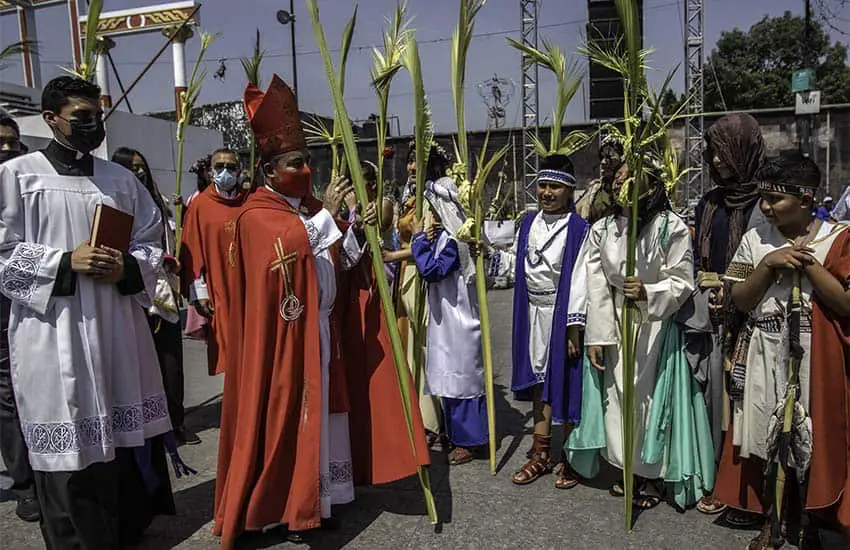
Like many passion plays around the world, it is linked to a historical event. A cholera epidemic raged here in the 1830s, when the area was then fields and small villages. The epidemic’s passing in 1843 was seen as a miracle, and the indigenous farmers gave thanks at first through a pilgrimage to the locally-important shrine of the Lord of the Cave (Señor de la Cuevita) near Easter.
The thanksgiving was repeated each year, with a reenactment of the crucifixion added.
This led the event to being fixed to Holy Week. It has grown in size and complexity ever since.
Borough historian Beatriz Ramírez González says that it has continued uninterrupted since 1843, although there is an assertion that it was suspended during the Mexican Revolution and revived by Emiliano Zapata himself.
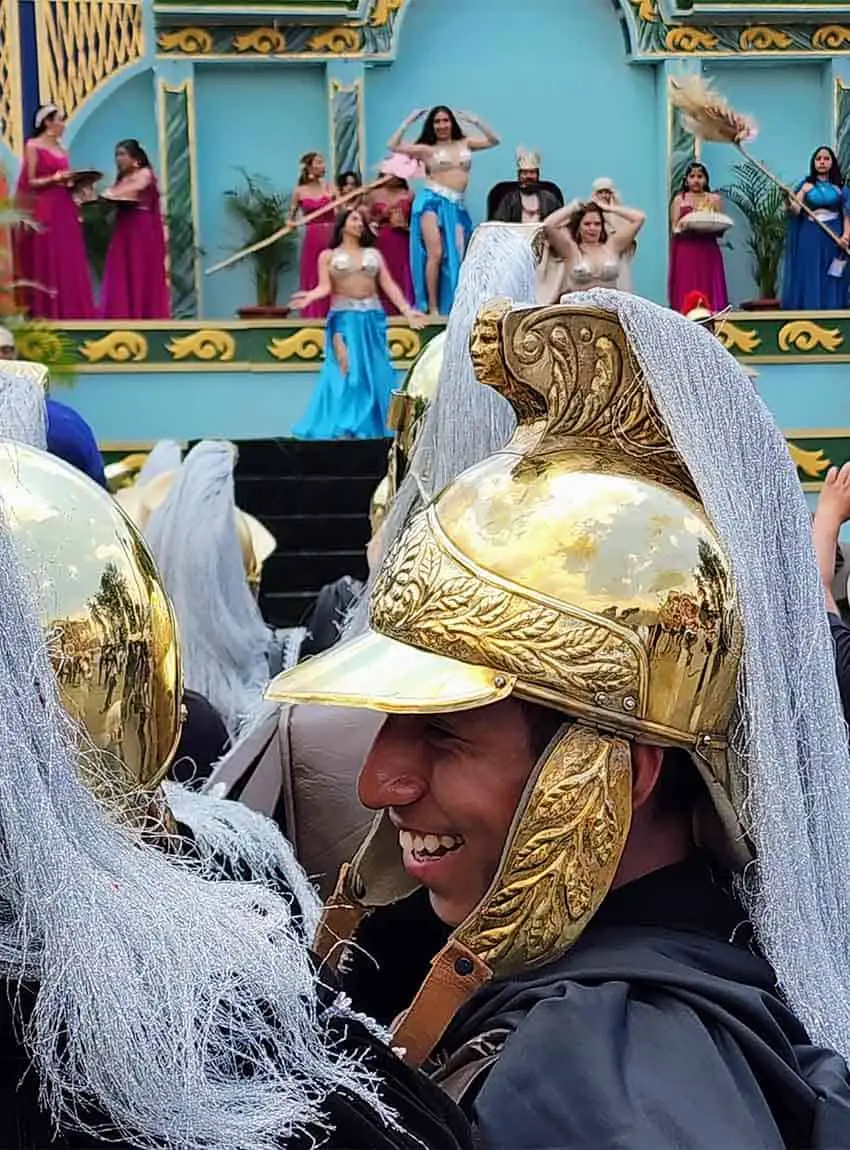
Over the years, the play has survived religious objections on how it was performed, government repression of religious display and, most recently, Covid-19. It was scaled back in 2021 and 2022, but not canceled, and returned in full this year.
The play is important both as a religious event and an expression of Iztapalapa identity, says Ramírez. Its traditions are strongly tied to the eight villages (pueblos) that existed before the borough got overrun by Mexico City’s urban sprawl in the 20th century.
Residents of the pueblos still run the event, and despite pressure, participation is still limited to them. Preserving this is important to the borough, and to this end they have had the play registered as part of the intangible culture of Mexico City (2012) and the country (2023). It is now working with UNESCO for international recognition.
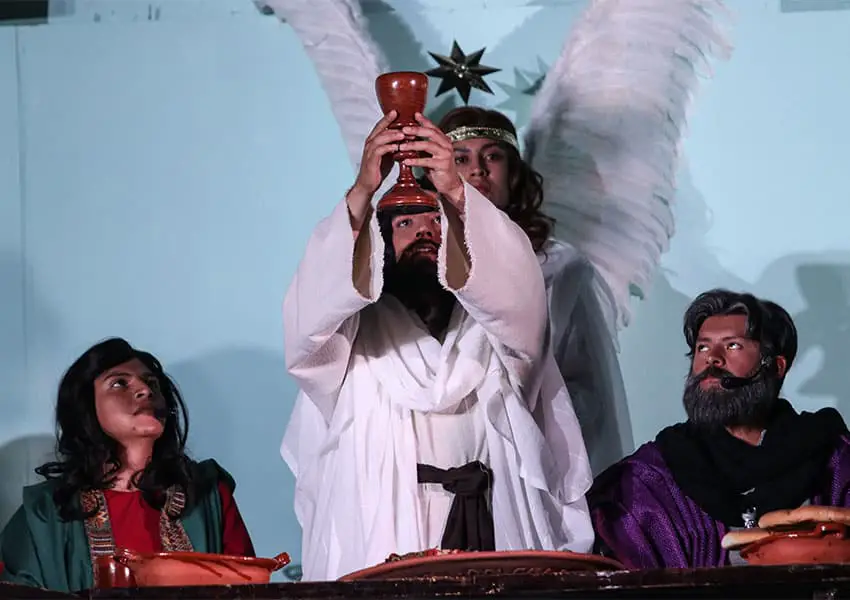
The most important events come later in the week, starting with the Last Supper on Maundy Thursday — the Thursday before Easter and a reenactment of Jesus’ Last Supper — and the most important: the crucifixion on Good Friday.
On this day, the actor playing Jesus must carry a 90-kilogram wood cross for 2 km through the pueblos to Cerro de la Estrella, which fills in for Mount Calvary.
Nothing about these scenes is done simply. The play involves over 5,000 people, with 150 having speaking roles. Sets, costumes, props and more are all locally made. Certain elements are made each year by the same family, such as the crown of thorns done by the Reyes family.
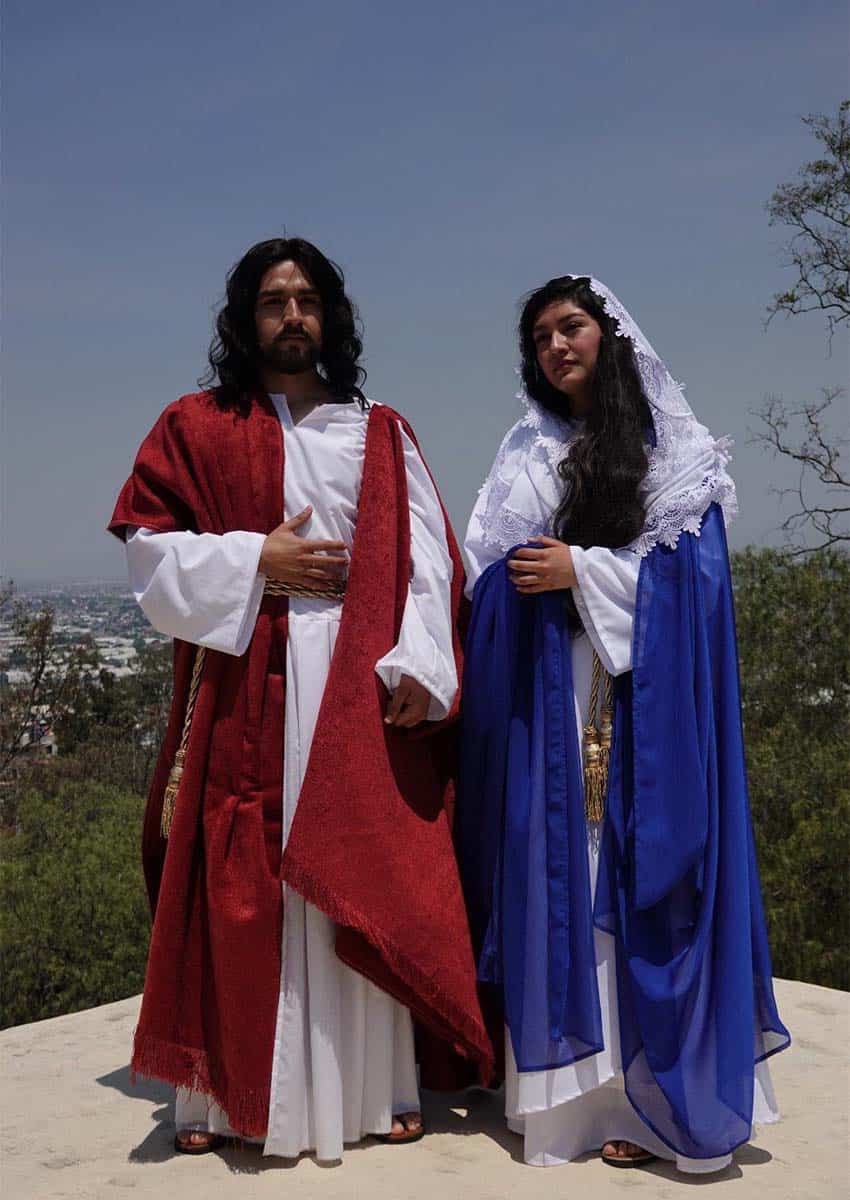
Many of the costs are borne by the participants and other residents of the pueblos, including sets, costumes and refreshments along procession routes.
Being cast in a role has both religious and prestigious aspects. The two most sought-after roles are those depicting Jesus and Mary. This year, the first role was taken on by David Uriel González and the other by Paulina Garcia, who were chosen from among 100 hopefuls.
These two are also the most demanding roles. Tradition dictates that neither could date, drink, smoke or go to parties after selection until the end of their duties. They also had to prove they had the financial means to perform the roles — and in the case of the young man, the physical stamina to withstand beatings and the carrying of the cross, with specific training starting six months in advance.
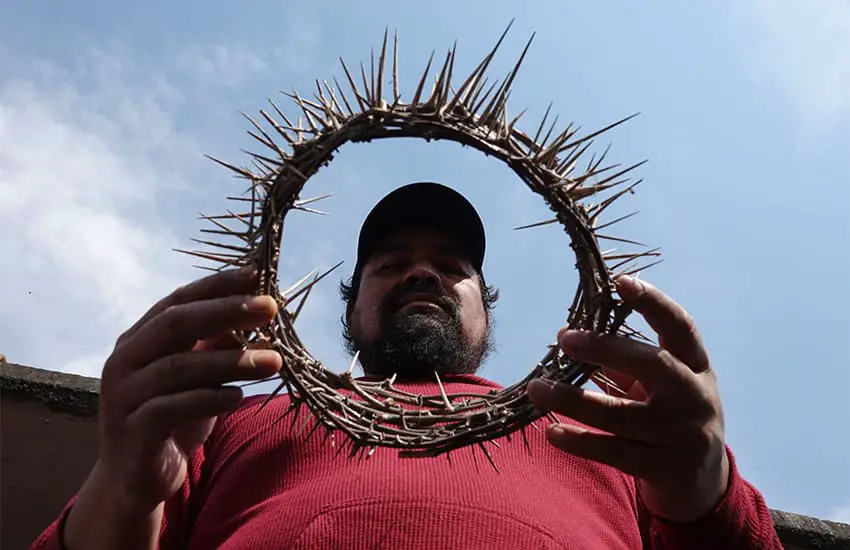
The uniqueness of Iztapalapa’s play comes from the fact that it contains elements from outside the Bible — from local traditions and other Christian and secular writing like Dante’s Divine Comedy.
The pilgrimage to the Lord of the Cave is still performed on Maundy Thursday. Judas Iscariot is performed as a menacing figure to the crowds who insult him as he flings fake coins at them, until he commits suicide next to Jesus’ cross. Unique characters include the “Wandering Jew,” King Herod’s harem, a spy and a dog that accompanies Judas Iscariot.
Local indigenous elements include the use of Mesoamerican drums and flutes and, perhaps most importantly, Cerro de la Estrella, which was home to the highly important Mesoamerican New Fire rite.

This passion play is a major tourist attraction for the borough, but it is with a heavy heart that I don’t recommend seeing it live, and it has nothing to do with the borough’s reputation for crime.
I learned long ago, that no matter how problematic the neighborhood, locals do not put up with violence during their major religious celebrations.
Like the Super Bowl, unless you have a special invitation, you will see little to nothing, as part of the 2 million or so people who line the streets and plaza to try and get a glimpse of the proceedings. Even though there are loudspeakers and giant screens, you are likely to get lost in a sea of homemade cardboard periscopes as you stand in the blazing sun, as was my experience.
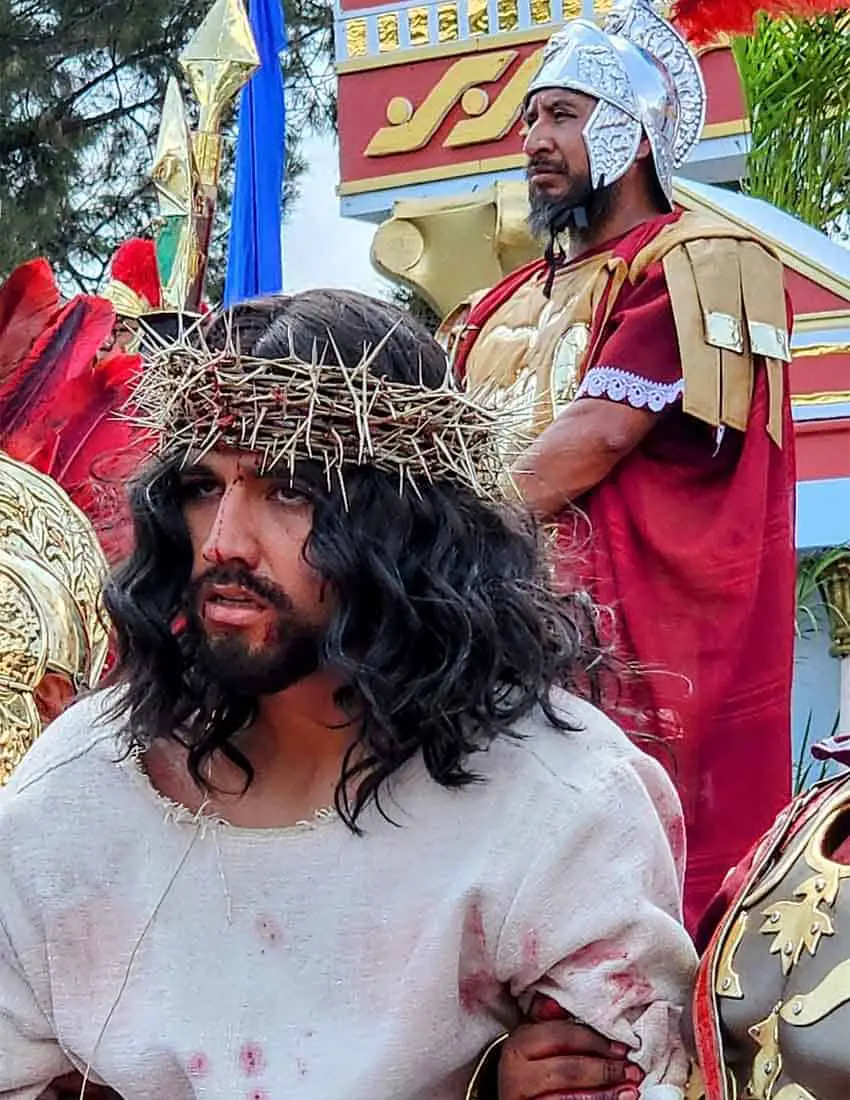
You are best off watching video of it on television, internet or social media, especially if you are not particularly religious.
Fortunately, the event is covered by just about all Mexico’s major networks, who post not only their reports about the play online but also the play in its entirety. Excelsior TV already has their 2023 recording up on YouTube.
Ramírez has no doubt that the play will continue long into the future. The play, even though it is from the 19th century, remains important in the 21st, she says, “…to prove that we are a people strong in this aspect to Mexico City, Mexico and the world.”
“It is a question of pride,” she says.
Leigh Thelmadatter arrived in Mexico over 20 years ago and fell in love with the land and the culture in particular its handcrafts and art. She is the author of Mexican Cartonería: Paper, Paste and Fiesta (Schiffer 2019). Her culture column appears regularly on Mexico News Daily.
